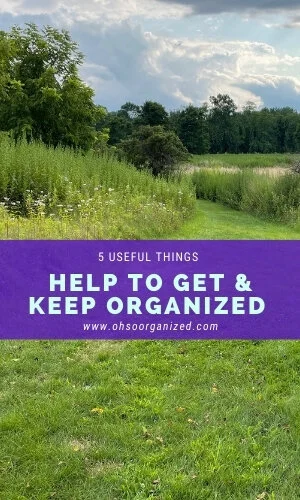When you think about types of motivation, often thoughts are about internal and external motivation. Recently, I noticed another way to consider motivation and helpful strategies to sustain them.
Instead of focusing on where motivation comes from, think about how much motivation you need over a specific time. For example, the time and motivation you need to accomplish a single task like responding to an email differ from what’s required to achieve a long-term goal such as organizing an entire home.
With this in mind, let’s look at three types of motivation that are time-based and ways to help you nourish your motivation.
3 Types of Motivation with Helpful Ways to Sustain Them
1. Short Motivation Burst
Characteristics:
You can accomplish the task with a few simple steps.
You can complete the task in less than 30 minutes.
You can do the task on your own.
The task has few if any obstacles to entry.
Short motivation examples include:
Taking a walk
Making a phone call
Responding to an email
Clearing the dishes from the kitchen sink
Putting your laundry in the hamper
Decluttering your handbag
Sorting today’s mail
In most cases, you need low motivation to complete these activities because they require less energy and have a high satisfaction or “done” rate. If you’re a list maker, you’ll enjoy the endorphin ping you’ll receive when you’re able to quickly check that “one and done” off of your list.
When you struggle with getting motivated, selecting a short motivation burst activity can give you the energy needed to tackle something more extensive.
“To enhance long-term motivation, gather your support team.”
2. Medium Motivation Gallop
Characteristics:
You can accomplish the item with multiple steps.
You can complete the item over several days or months.
You might require help or information from someone.
You might encounter some obstacles before or during the process.
Medium motivation examples include:
Preparing tax returns
Developing a new workshop
Organizing a kitchen
Writing an article
Reviewing your financialsEditing and re-organizing your filing system
Helping your kid pack for college
More motivation and energy are needed to complete these types of projects. You might encounter some emotional or physical challenges along the way or be unsure of your next step. The challenges can result in feeling deflated or de-motivated.
To sustain motivation for the medium motivation projects, spend time gathering your resources, whether physical ones like trash bags, markers, and boxes or emotional ones, like the support of friends, family members, or professional organizers like me.
3. Long Motivation Journey
Characteristics:
You can accomplish your project with a series of mini goals.
You can complete your project over months or a year plus.
You will require external support and possibly a team.
You will experience obstacles before and during the process.
Long motivation examples include:
Losing weight
Organizing an entire home
Getting a college degree
Saving for retirement
Designing and planting a garden
Since the long motivation projects happen over an extended time, it can be especially challenging to maintain the energy and motivation needed to bring them to fruition. You will sometimes experience challenges, waning motivation levels, and energy loss.
To sustain your motivation:
Break the projects down into doable mini goals
Pace yourself, which will reduce burnout
Gather your support team
Enlist help from accountability and thought partners
Share with others what you are working on
Gather tools and resources to accomplish what you want in advance
Add to your toolbox along the way
Keep your eye on the goal, but be flexible with how you get there
As you head for the end goal, focusing on appreciating the journey and the mini successes along the way will enhance your motivation and satisfaction.
Have you considered motivation needs based on time parameters? If so, what has your experience been? I’d love to hear your thoughts. I invite you to join the conversation.









